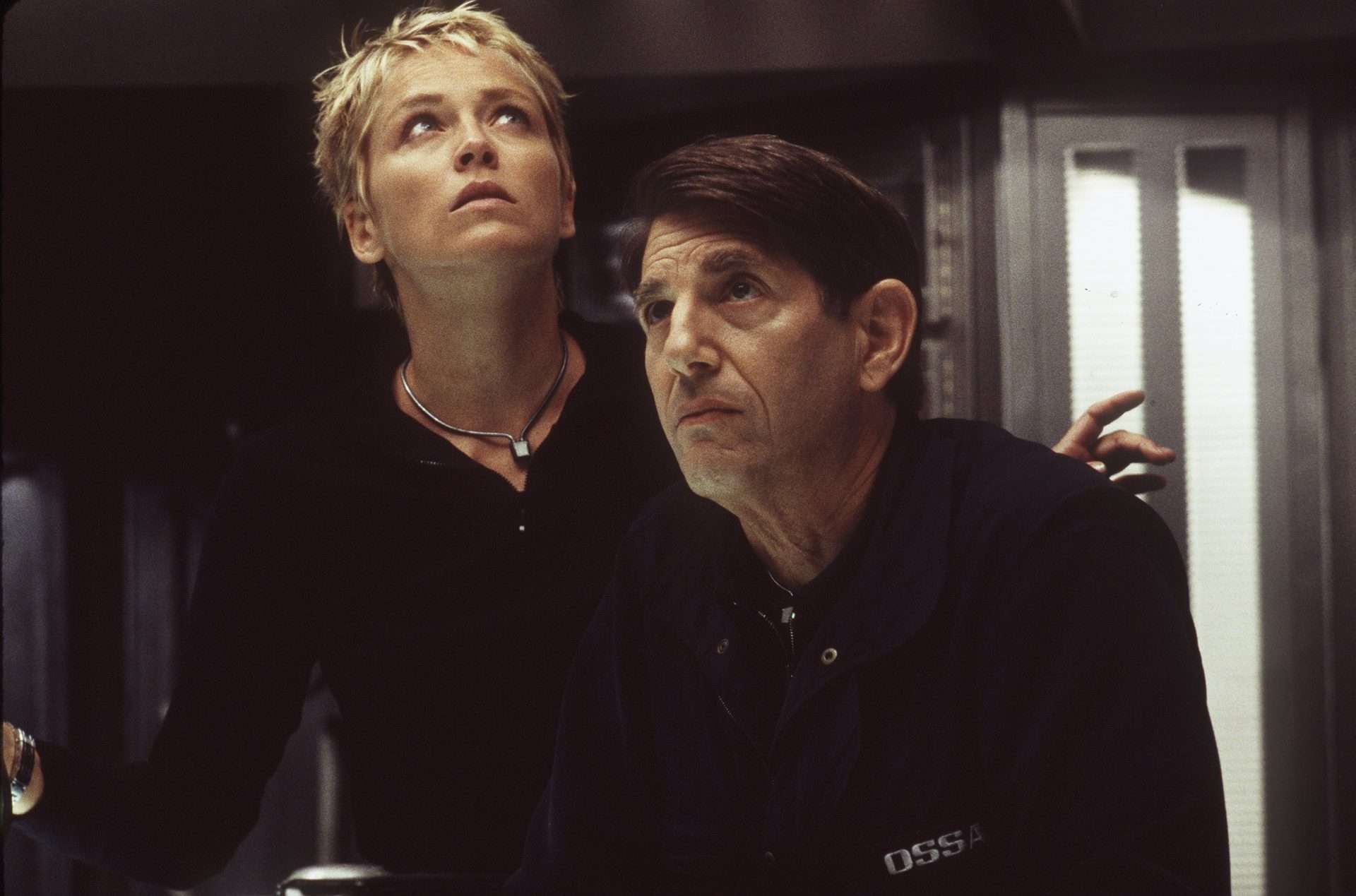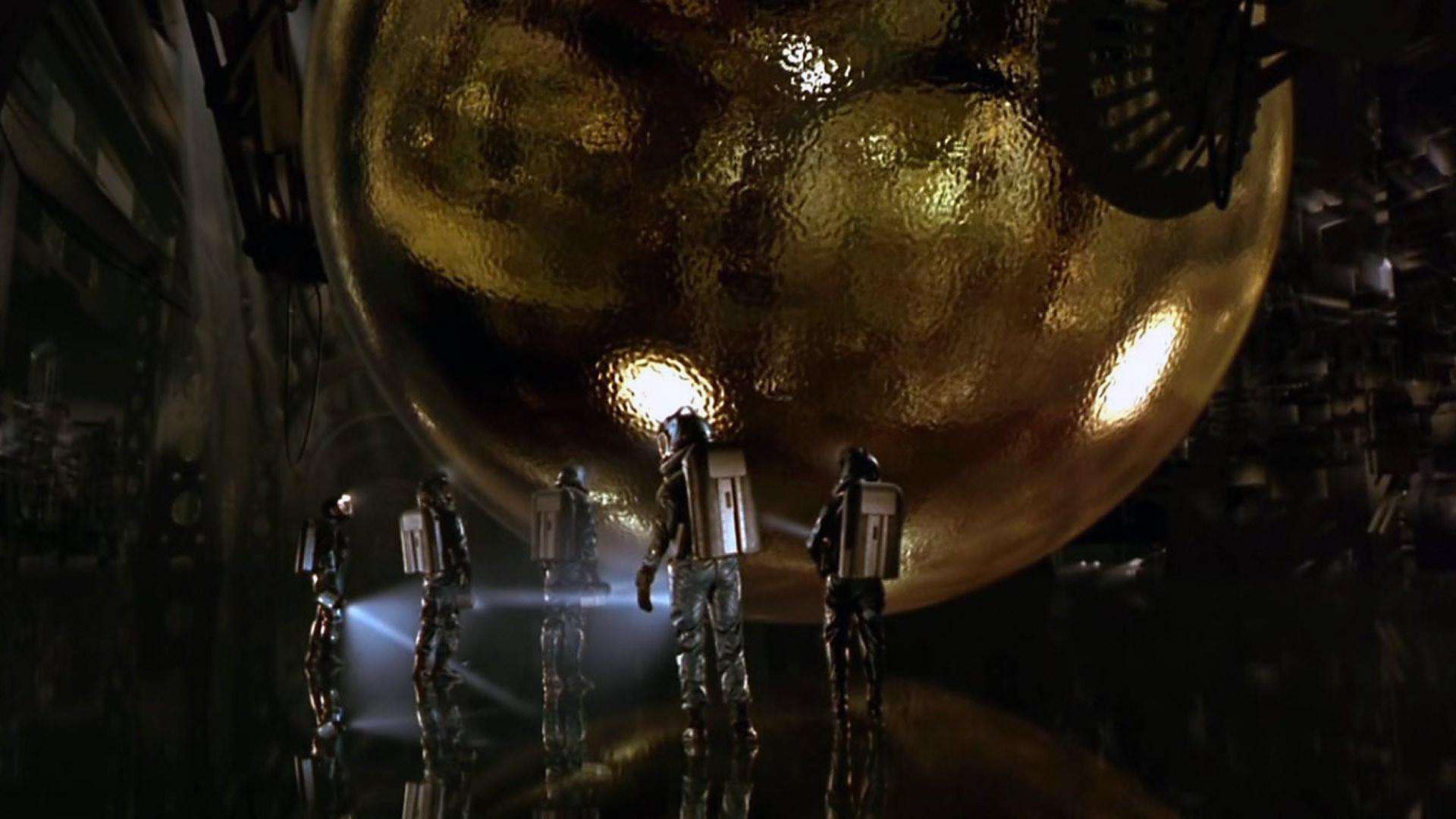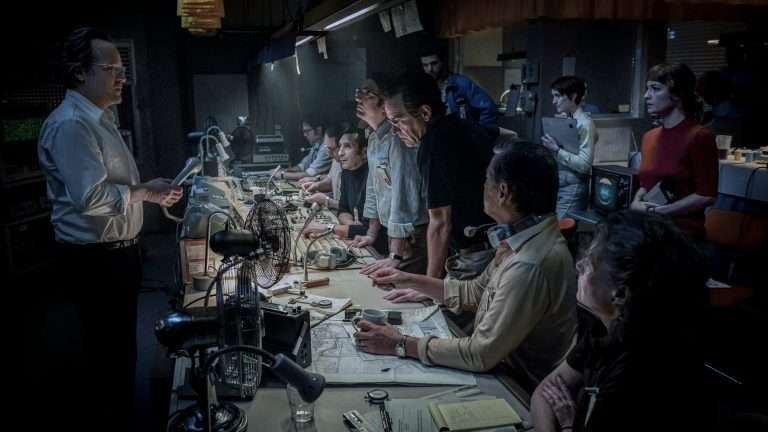As an author and a screenwriter, Michael Crichton always produced far-fetched yet high-concept ideas within genre set-ups. The creation of a high-concept amusement park where the park inhabitants would try to kill the visitors serves as the premise of both Crichton’s novel “Jurassic Park” and its classic 1993 movie adaptation directed by Steven Speilberg, as well as Crichton’s 1971 sci-fi feature “Westworld.”
Heavily incorporating techno-thriller, science fiction, and medical thrillers into his oeuvre, it is perhaps not a surprise that a movie adapting his 1989 sci-fi novel “Spehre” would be fast-tracked, especially considering the obsession of Hollywood with setting movies as exploratory expeditions deep beneath the ocean floor, a la “The Abyss.” It allowed them to treat the ocean with the same form of reverence and a veritable sci-fi sandbox similar to deep space.
Sphere (1998) Plot Summary & Movie Synopsis:
As the film begins, we learn that an unknown spacecraft has been discovered at the bottom of the Pacific Ocean. What’s more astonishing is the growth of coral around the spaceship, which crashed into the ocean about 300 years ago. A team of experts is sent to the Habitat, a cutting-edge underwater outpost located near the wrecked spacecraft at the bottom of the ocean. The team of experts, directed by US Navy Captain Harold Barnes (Peter Coyote), includes psychologist Dr. Norman Goodman (Dustin Hoffman), marine scientist Dr. Beth Halperin (Sharon Stone), mathematician Dr. Harry Adams (Samuel L. Jackson), and astronomer Dr. Ted Felding (Liev Schrieber).
What is the spaceship in “Sphere”?
To enter the habitat, the team must undergo re-pressurization using helium in the exotic gas environment. Once that is achieved, a robot is sent to open the spacecraft. Further research is undertaken by the team, with them slowly realizing that the initial hypothesis had been wrong. The spacecraft they had come to explore had been human-made. While the rest explore the base (realizing the English lettering on cubicle-like structures denoted as trash is quite noticeable), Goodman and Halperin check the computer logs, realizing that the spacecraft had undertaken a mission either in 2043 or 1643. Still, they had come across an “unknown entry event.”
A holographic re-enactment of the event reveals the spacecraft going through a black hole and landing 300 years ago in the 1700s beneath the ocean bed. The team, having worn pressure suits eerily resembling spaceflight suits, stumbles across the cargo the spacecraft had been transporting—a large golden sphere exhibiting striations on its surface, indicating it is almost alive, and its perfection in design, indicating technology utilized that is light-years beyond current technology. It is impossible to probe the inside of the sphere, but as Norman notices, the sphere reflects everything in the room except the four team members.
Who is Harry in “Sphere”?
Played by Samuel L. Jackson, Dr. Harry Adams is almost equivalent to and thus shares a friendly rivalry with Dr. Ted Felding because both of them obtained their PhDs in their late teens. Harry, however, during brainstorming with the team, realizes that Ted has figured out that time travel is involved. But as he points out to Norman, because the event is denoted as an “unknown event,” it stands to reason that no one in the present would come to know about this current expedition. From that, Harry extrapolates that they would all die on this expedition. While the rest of the team rests after their trek inside the spacecraft, Harry sneaks into the spacecraft and manages to enter the sphere. When Harry’s disappearance is discovered by Barnes and Norman, Norman rushes to follow Harry and finds Harry unconscious outside the sphere.
Who contacts the crew at the Habitat?

When Harry regains consciousness, the rest of the team is surprised as they notice a shift in his persona—his hunger has returned, and he has become more cheery, except for a newfound hatred for squid. Soon after, the crew noticed numerically encoded messages emerging on their screens. Harry recognizes that the code follows a pattern, and after isolating that set of codes, Ted hypothesizes that the sphere initiated the contact. The sole way to make contact on a level playing field would be to spherically reframe a keyboard and type a message using the reconstructed keyboard. The plan succeeds because they decode the message and understand they are being visited by “Jerry,” an alien intelligence within the sphere.
Who dies in “Sphere”?
The crew is forced to stay inside the habitat for a week as a powerful typhoon has struck the surface, rendering evacuation unsafe. However, bizarre incidents start occurring while “Jerry” tries to maintain contact with the crew. One of the habitat’s support staff, Fletcher (Queen Latifah), gets killed by aggressive jellyfish and sea squids. Upon discovering and forensically analyzing Fletcher’s body, Halpern reveals to Norman that such sea creatures couldn’t exist in reality.
The second support staff, Edmunds’ body, is discovered floating outside the spacecraft, her body completely pulverized by something heavy. As Barnes tries to identify it via radar, he realizes it’s a giant squid. Both Halpern and Norman also realize that when they are dragging the body back in, they are almost buried alive by egg sacs from presumably the sea squids, which isn’t shown. The two of them manage to return to the base, but the squid begins to attack the habitat, leading to equipment failures.
In the ensuing chaos, which leads to pressure fluctuations and fire in the engine room, Ted is burned to death. Barnes, meanwhile, is cut in half by a malfunctioning door. Sea snakes attack Norman, though he is left unscathed. As messages from Jerry reveal, he can manifest these creatures and is thus directly responsible for the bizarre events occurring.
Who is Jerry?
Norman, upon realizing that something is wrong with Harry, not just because of his changed demeanor but also because Harry had slept through the entire ordeal and did not react to the deaths of his comrades, tries to rationalize the event through the perspective of their communication with Jerry. He is repeatedly reminded of Jerry chastizing them for not calling him by that name. Going through the code and decoding it via the spherical framework of the keyboard, Norman realizes that Harry had decoded the name wrong, and it might have been intentional. Because the name “Jerry” had been misspelled, it should have been spelled “Harry.”
It thus turns out that the “Harry” that had emerged from the sphere had been communicating via the computers, transmitting each of his subconscious thoughts while he had been asleep. It also tracks with regards to Harry reading “Twenty Thousand Leagues Under the Sea,” but only up to Page 86. Page 86 describes the first instance of the giant squid, and the book after Page 86 is rendered blank. Coupled with Norman’s attack by shrimp with no digestive systems outside the habitat and Halperin mistakenly getting sent to the spaceship to look for rations because their food had run out, both Norman and Halperin conclude that Harry had attained the ability to manifest any thoughts or fear into reality, and thus all the events that had been occurring had been a result of Harry’s overactive imagination.
To test this theory, Norman and Beth sedate Harry to lull him to a dreamless sleep so that he won’t cause any more damage. They reasoned that they would be able to evacuate once the cyclone had abated back up on the surface. But while in his dorm, Norman is attacked by sea snakes and is almost flooded until Halperin calmly walks up to him and rescues him. Halperin then traps Norman inside the lab and confronts him, accusing him of entering the sphere when he has gone to retrieve Harry. Because Harry is out of commission, the visions should not manifest unless someone else is attuned with similar abilities, which Beth believes Norman has.
But amidst the confrontation, Beth manifests her nightmarish visions, which leads to the lab being flooded, and Norman manages to escape using the hatch and a lone oxygen cylinder with a breathing apparatus and finally swims back in through the entrance. Meanwhile, Beth is plagued with suicidal thoughts enhanced by her insecurities, as well as the overall confusion plagued by the visions. In the process of entertaining these thoughts, she manages to open the airlock, only to finally recover the rotted body of Barnes, with blood overflowing and mixing with the water. When Norman finally enters the habitat, he finds Beth sitting on all fours, holding her head in her hands, and that’s when Norman reveals that Beth, too, has gone inside the sphere.
Sphere (1998) Movie Ending Explained:
What powers did the Sphere grant the crew?
Harry, having woken, confronts the rest of the team, and their pow-wow reveals the truth: the crew of the spacecraft had also entered the sphere. Having attained these powers had also given them a renewed sense of paranoia that had enhanced their latent dread and hatred. This led to the crew killing each other.
How does the trio escape the Habitat?

A warning signal informing them they have 13 minutes to escape from the base before the panther explosives are set off brings them back to Earth. Beth reveals that she planted explosives all around the base as a defense perimeter. But something had triggered the explosives, and a stable Harry reveals that Beth had triggered it herself.
Realizing that they are running out of time, the trio race to the Habitat’s mini-sub, with Norman planning to navigate to get them out of there. However, the three of them manage to manifest their worst fears, and more importantly, Harry’s fears of dying down there, due to which they experience a form of folie a deux where they imagine themselves back at the spacecraft. It is only through Norman’s mental training that he manages to convince the two of them that it isn’t real. As Norman navigates the mini-sub back to the surface, the explosion is triggered, destroying the habitat and the spacecraft, but the sphere remains unaffected. So does the mini-sub, contrary to Harry’s fears of being affected by the shockwave.
What happens at the end of “Sphere?”
The mini-sub ascends to the surface. As the trio undergoes safe decompression, they realize that they would have to debrief the army about what had happened down there, and that would cause the army and the world to know about their newfound powers. The bigger fear for the trio is the fact that they had been given powers beyond natural comprehension, and when push came to shove, they let themselves be guided by their paranoia and selfish interests and decided to kill each other.
As Harry and Norman concede, they weren’t ready, and thus, they decide that the only way to ensure this power doesn’t fall into the wrong hands, including themselves, is to choose to forget. Another instance of folie a deux is when the trio hold their hands together and manifest, forgetting about their powers and the sphere. While this occurs, the sphere emerges from the ocean and flies off into space. This is a somewhat elegant response to “Harry’s Paradox”—the only reason the event remained unknown is because the survivors chose to forget about the incident of the sphere.
Sphere (1998) Movie Review:
I suppose calling Michael Crichton a popcorn sci-fi writer wouldn’t be disrespectful but rather an acknowledgment. But “Sphere” feels like Tarkovsky’s “Solaris,” for idiots. In Tarkovsky’s “Solaris,” engagement with an alien object leads to the manifestation of desires and fears into reality, but the conceptual treatment in “Sphere” is markedly different from “Solaris.” And while that isn’t an issue from the outset, Barry Levinson, the director of this adaptation, fails miserably. The plot does not have much to say, but the second act is constructed almost like an ouroboros, with every character voicing the obvious, almost as a form of padding.
It is further exacerbated by the throwaway scientific and mathematical elements involved, but most importantly, the editing of the movie is a disaster in temporal and spatial continuity. Levinson, much more at home in making comedies, clearly finds himself at a loss for directing action or disaster set pieces with any form of spatiality. As a result, events occur extremely randomly, with rapid editing further increasing confusion and inability to evoke a basic understanding of the progression of events, especially in the sequence where the giant squid and internal faults wreck the habitat.
But that brings us back to the complacency within the screenplay, which is introduced to bolster engagement with the viewer. However, the increasingly convoluted nature of the screenplay does not disguise how slim and ultimately simple the story is. It does fall on the performers to elevate this subpar material, and credit goes to Hoffman and Jackson for managing to make this “The Abyss” knockoff into something bearable to watch.










